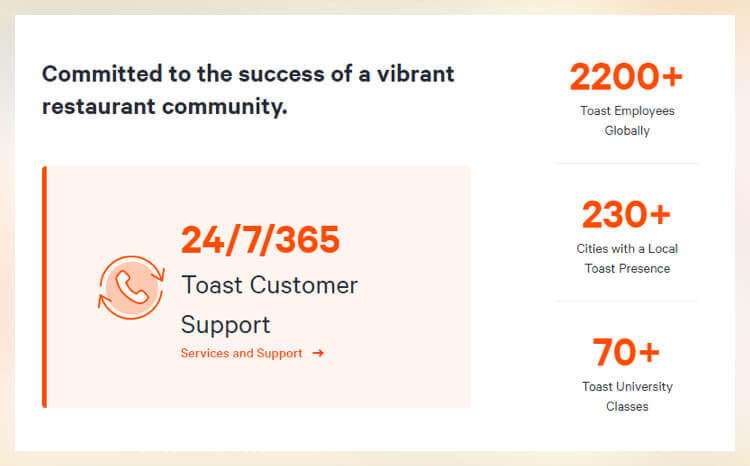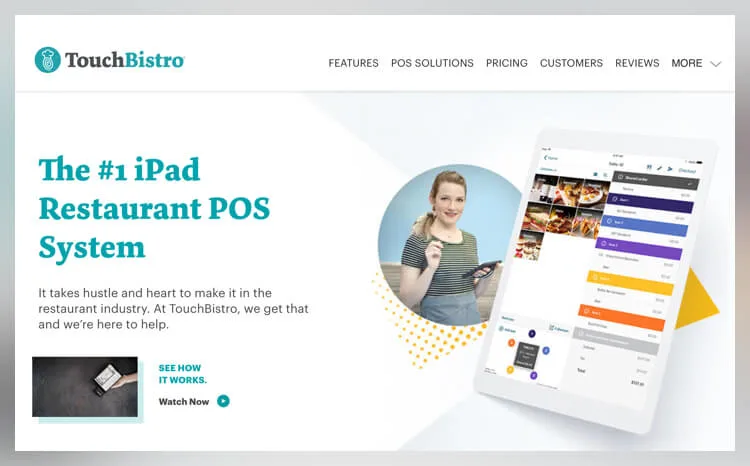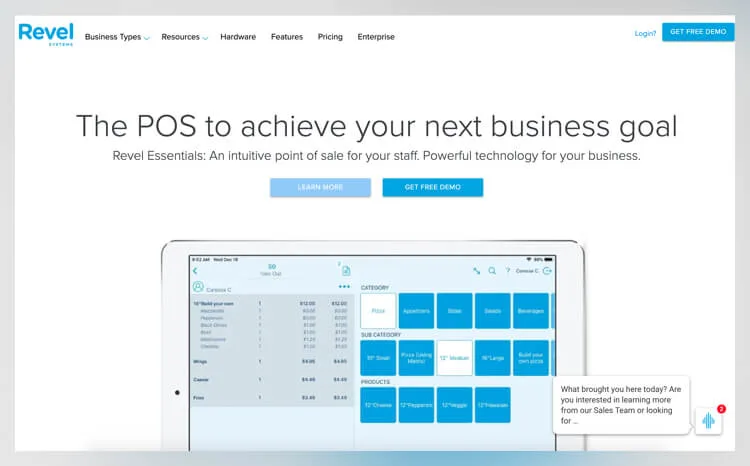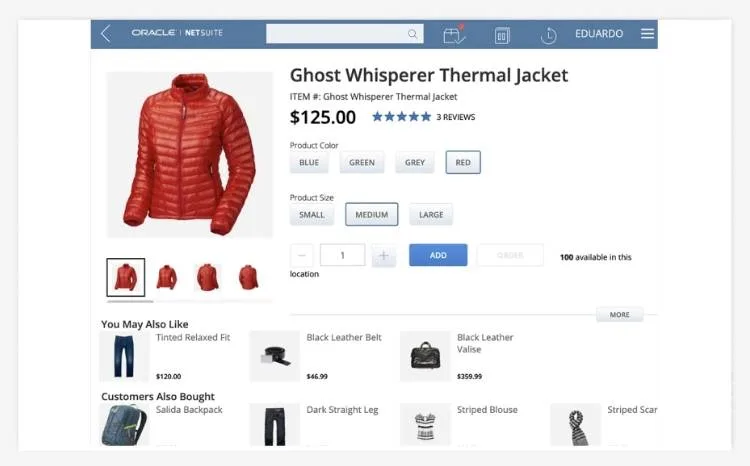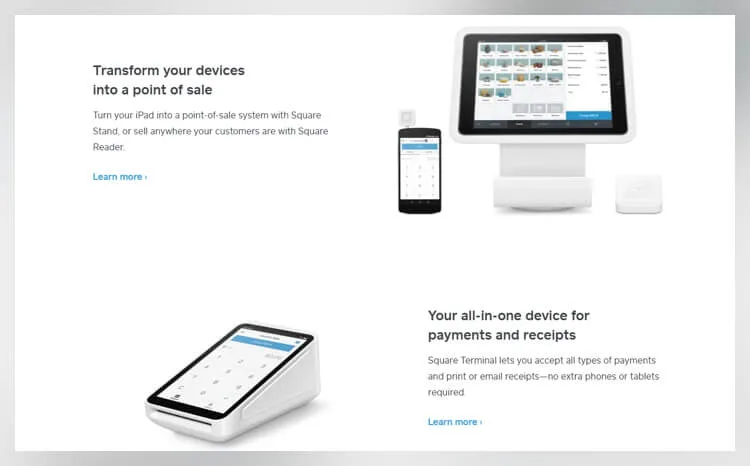Top 10 Best POS Systems 2022 – Revolutionize Your Business

A point of sale system used to be no more sophisticated than a standard cash register, but oh, have the times changed. Today, your typical POS system comes fully loaded with all kinds of features and gadgets, including inventory tracking and reordering, customer retention programs, and employee management tools.
With COVID-19 constantly changing the rules of the game, the features offered by the latest POS systems can keep you ahead of the competition, especially around this time of the year when planning your business activity for 2022 and beyond.
Bottom line, if you want to succeed in retail today, it’s a good idea to get yourself a reliable and feature-rich POS system. Options abound when it comes to this industry, so you’re not lacking for choices. The trouble is that not all retail POS software was created equal, and some are lagging far behind. To save you the trouble, we’ve tested loads of POS systems and ranked the top 10 for quality, efficiency, speed, price, and other important features.
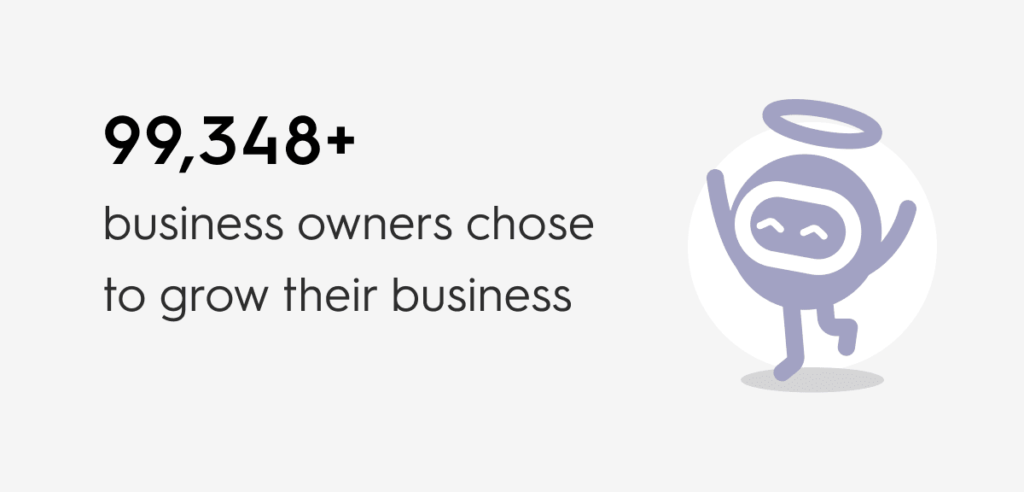
#1

- Best for:- Retail and restaurants, all-inclusive
- Price range– $99-$289
- Mobile Compatibility-iPad, mobile extensions
- Cloud-based or on-premises- Cloud-based and mobile
- Compatible Credit Card Processors- Yes
#2

- Best for:- Expanding businesses in any retail or service
- Price range– Starting at $14
- Mobile Compatibility-Proprietary hardware, not compatible with iOS
- Cloud-based or on-premises-Cloud-based with offline mode
- Compatible Credit Card Processors- Yes
#3

- Best for:- Food industry services of every size
- Price range– From $0.00 – $165.00 per month
- Mobile Compatibility-Android-based mobile compatibility
- Cloud-based or on-premises- Both
- Compatible Credit Card Processors- Yes
#4
- Best for:- Designed for all food industry businesses
- Price range– Bundles from $105
- Mobile Compatibility-iPhone, iPad, web-based
- Cloud-based or on-premises- Both
- Compatible Credit Card Processors- Yes
#5
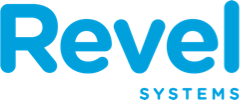
- Best for:- SMBs and enterprise retail and food services
- Price range– Starting from $99
- Mobile Compatibility-iPhone, iPad, web-based
- Cloud-based or on-premises- Cloud-based
- Compatible Credit Card Processors- Yes
#6

- Best for:- Mid-sized and large retailers
- Price range– Starts from $999 per license + $99 per user per month + separate price per module
- Mobile Compatibility-Yes
- Cloud-based or on-premises-Cloud
- Compatible Credit Card Processors- Any
#7

- Best for:- SMBs that experience low-volume sales monthly
- Price range– Starting at 2.5%
- Mobile Compatibility-Fully compatible with iPad and mobile devices
- Cloud-based or on-premises- Both
- Compatible Credit Card Processors- Yes
A Closer Look at the Top 10 POS Systems
1

Lightspeed
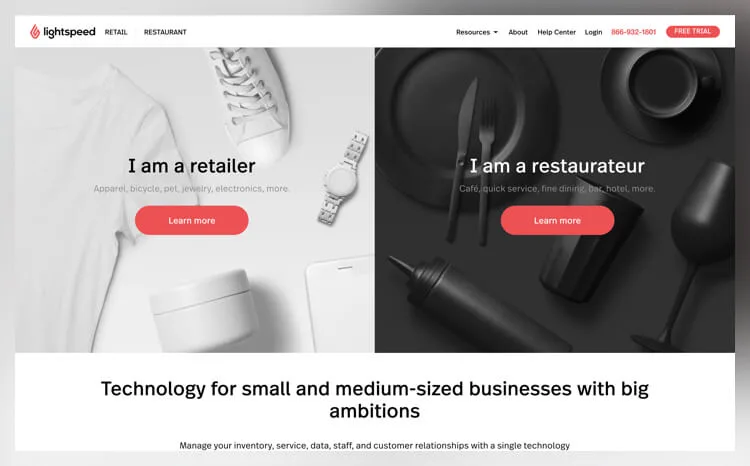
Our reviews come from verified users–just like you!
The star ratings are based on the overall rating of each brand. Some reviews are provided via third party suppliers. We encourage you to write a review of your experiences with these brands.
- Price range- Additional value-added services, low rates
- Best for - From 0.15%
- Mobile Compatibility-3 years
Lightspeed takes all the frills of TouchBistro and upgrades them for both retail and restaurant usage. So, you get neat features like food management systems and interactive menus for the food industry. Lightspeed’s menu functionality is particularly sleek, providing HD photos, descriptions, and pricing for every menu item. You can also create loyalty programs to reward frequent customers and a full-fledged CRM, so you can really keep track of who’s coming and going.
Meanwhile, for retailers, Lightspeed offers plenty of hardware options to improve your efficiency and sales, like scanners, printers, and electronic cash drawers. The POS system also comes with sales reporting, merchant services, and an Ecommerce platform. What’s more, Lightspeed’s inventory management is in real-time, so you can tell customers on the spot whether or not you have a particular item left in stock.
Prons
- Lots of extra hardware options
- Advanced features come with basic plan
- Easy to use and train visual interface
Cons
- Can be confusing to figure out profit margins
- No confirmation received when sending email orders
2

Clover
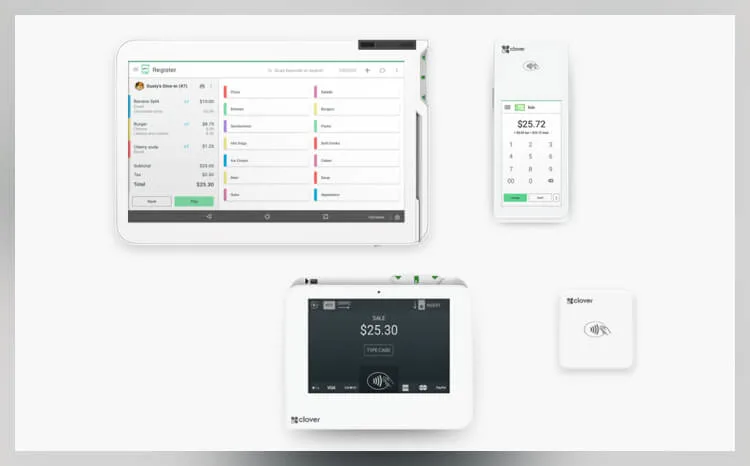
- Price range- Starting at $14
- Best for - Expanding businesses in any retail or service
- Mobile Compatibility-Proprietary hardware, not compatible with iOS
If you’ve had any experience with POS systems in the past, then Clover will be a familiar name. That’s because this hardware is even used by other POS software providers, and that should tell you something about the system. Clover POS has all of the features you’d expect from a POS system, including built-in payment processing, order management, and customer management system. There are even marketing campaigns, loyalty programs, and birthday promotions to help grow your customer base. Clover offers other tools like shift management, scheduling, and register activity logs, as well.
Clover provides both stationary and portable hardware devices, so you can select the type of hardware that works best for your business needs and layout. Clover POS is also totally customizable with scalable plans, add-ons, and accessories that help you expand your reach as your business grows. Of course, if you want to go all out, Clover has some interesting features like customer feedback, guest management, and gift card generator.
Prons
- Tons of integrations to expand your functionality
- Easy-to-use software and hardware
- Many features included in the basic plan
Cons
- Android OS isn’t as sleek as iOS
- Can’t use your own payment processor
3

Toast
- Price range-From $0.00 - $165.00 per month
- Best for - Food industry services of every size
- Mobile Compatibility-Android-based mobile compatibility
Toast is a cloud-based restaurant-geared POS system provider with all the bells and whistles you could ask for. From the online ordering system to a loyalty rewards program, gift card generator, and detailed inventory management system, Toast has thought of it all. Splitting checks, simple order voiding, and closeout day functionality only sweeten the pot.
Unlike most POS systems, Toast runs on the Android operating system. What this means for a business owner is that the hardware is significantly cheaper to purchase and more versatile in terms of integration. Toast Go, the mobile hardware option, allows wait staff to manage their tables, orders, payments, and tabs tableside for faster and more efficient ordering. In general, Toast is a sleeker, smoother, easier POS system to use than most.
Prons
- Excellent restaurant-specific features
- Neat Go hardware for tableside management
- Top-of-the-line customer support
Cons
- Have to pay more to get the cool features
- Installation fee
4
TouchBistro
- Price range-Bundles from $105
- Best for -Designed for all food industry businesses
- Mobile Compatibility-iPhone, iPad, web-based
TouchBistro is another good choice for businesses of every size in the food industry. Whether you own a food truck or run a full-service restaurant, brewery, or nightclub, TouchBistro is the POS software that was specifically designed for your industry. That means it comes with features that cater to your needs, pressure points, and clientele. Food managers will appreciate details like self-ordering for faster service, a kitchen display system for faster and better communication between wait and kitchen staff, and a digital menu board for instant menu updates.
In addition to the usual perks, like reporting, analytics, and inventory management, these POS systems come fully loaded with features like tableside ordering, restaurant table management, and menu management. Managers will also appreciate the scheduling features included with TouchBistro hardware because it makes staff management so much simpler.
Prons
- Transparent pricing and fees
- Specifically designed for food industry needs
- $0 commission online ordering, loyalty, reservations, and more
Cons
- Not as relevant for retail or clothing markets
- Partially network-based
5

Revel
- Price ranger-Starting from $99
- Best for -SMBs and enterprise retail and food services
- Mobile Compatibility- iPad compatible, mobile compatible
Revel incorporates all aspects of a reliable and efficient POS system into one. When it comes to retail stores or the food industry, Revel delivers a true omnichannel platform that lets you handle every aspect of your business, including Ecommerce, mobile sales, custom branded apps, and of course, in-store purchases.
Revel also has incredible inventory management. You can automate your orders, so the system automatically reorders items when you’re running low, and Revel excels at keeping track of inventory in real-time. In fact, you can even drill-down to ingredient inventory management.
Something else that makes Revel stand out is its userbase. While most POS system brands cater to SMBs, Revel has both a small business option and an enterprise-level one. So, no matter what the size of your business currently or in the future, this POS system can cover all the bases.
Prons
- In-depth inventory management
- Neat back-office tools for better efficiency
- SMB and enterprise-level solutions
Cons
- Confusing pricing structure
- API access only available for a price
6

ORACLE NET sUITE
- Price range- Starts from $999 per license + $99 per user per month + separate price per module
- Best for -Mid-sized and large retailers
- Mobile Compatibility- Yes
Oracle NetSuite is a unified business management platform comprising a suite of ‘modules’ including SuiteCommerce InStore, a point-of-sale solution. SuiteCommerce InStore provides your salespeople with all the tools they need to help them assist and engage shoppers. It includes enhanced customer profiles, order and inventory management, and dynamic merchandising–allowing you to fulfill customer preferences at the point of contact.
SuiteCommerce InStore ties your POS system seamlessly to all your operational business systems, eliminating the need for integrations between separate systems. Its touch-tablet user interface and responsive design deliver user-friendly digital tools across any device.
Prons
- Suite of tools to help sales associates assist and engage shoppers
- Natively connects to your business systems, eliminating integrations
- Accessible via cloud, lowering your software costs
Cons
- POS is only available with complete package
- No free trial
7

Square
- Price range-Starting at 2.5%
- Best for- SMBs that experience low-volume sales monthly
- Mobile Compatibility- Fully compatible with iPad and mobile devices
Unless you’ve been living under a rock somewhere, you are already more than familiar with Square. It’s unquestionably the most well-recognized POS system on the market today, and that’s not surprising. Offering no monthly fees and impressively low rates, Square is a favorite for low-volume businesses looking to save money. You can pay a flat rate of 2.6%+$.10 for swiped transactions and 3.5%+$.15 per keyed transactions. In case you aren’t in the know, those are really good rates.
Square isn’t just a cheap meal ticket, either. The iPad POS system is fully loaded with features like an Ecommerce platform, inventory management, and virtual payment terminals. Square is also mobile-friendly, comes with an API for developers, and tons of third-party integrations. While it’s not a good option for high-risk industries, Square is ideal for just about any other type of business, including at-home services, food industries, and retailers.
Prons
- Huge reputation for quality and affordability
- Easy, flat-rate pricing structure
- No monthly fees and free chip readers
Cons
- Not great for high volume merchants
- Doesn’t work with high-risk industries
Frequently Asked Questions?
Toast has been rated the #1 POS for iPads on the iOS app store and earned plenty of positive reviews for its flexibility, features, and prices.
Simply put, a good POS system is one that can accommodate your business’ needs. It should be scalable, able to accommodate the size and diversity of products or services your business offers, and should have strong customer service support.
LightSpeed is a favorite POS system for retail businesses. It offers a solid Ecommerce platform as well as hardware options such as scanners and electronic cash drawers that are particularly useful for retailers.
The Types of POS Software and Their Costs
There are 4 main types of POS software:
Mobile POS software
This software is cloud-based and comes as an app on your smartphone or tablet. It’s usually compatible with a receipt printer and a credit card swiper, but not as powerful as a full terminal POS system. It’s ideal for sole traders such as plumbers or mobile food cart owners.
Tablet POS software
The tablet version is similar to mobile POS software, but offers more features and capabilities. You could use tablet POS software to manage a large and complex retail organization, including inventory tracking, employee time tracking, payroll, and accounting. They are compatible with many POS hardware solutions to form a complete POS system for any situation.
Terminal POS software
This is a fixed POS software with full back-office capabilities. It can be cloud-based or on-premise. Terminal POS software is best suited to large retail stores, spas, malls, and other brick and mortar businesses.
Self-service or unattended POS software
This is designed to be used in kiosks and outdoor units where it’s not practical to post an employee. It is often integrated with another POS system nearby, like to provide an extra sales point in a busy grocery store. It can be cloud-based or on-premise since it’s not used with a mobile system.
You’ll also find POS software designed for the unique needs of specific industries, such as restaurant and hospitality businesses, apparel retail, financial services, academia and education, and pharmaceuticals POS software.
The costs of your POS software will vary depending on the type of software you choose. Mobile POS software, such as a smartphone app, can begin at $50 per month, while more complex software can reach several hundred dollars monthly. When you buy POS software, you’ll usually need to pay an upfront purchase price, plus an ongoing monthly or yearly payment processing fee.
Other factors that may affect the cost of your POS software include:
- How many features you add
- Any hardware included
- Number of integrations
- Your operating system
Getting the Right POS Hardware
POS hardware is the indispensable other half of your POS system. You’ll need to get the right hardware to match the actions and transactions you want to carry out using your POS system. A basic set of POS hardware consists of:
- Printer to offer hard copies of receipts (retail stores, restaurants, and other brick and mortar businesses are likely to need this)
- A POS terminal, or iPad or Android tablet to run your POS software
- Credit card reader
- A cash drawer to keep cash transactions secure and logged into your system
Depending on your business, you might also need:
- Extra tablets so wait staff can process orders at the table in restaurants
- A router to strengthen your internet for cloud-based POS systems
- A local server to host your on-premise POS software
- Weight scales for food retailers
- Barcode scanners
- Networking cables to connect all of your hardware
- An extra kitchen printer
- Self-serve checkout kiosks
The Benefits of a POS System For Your Business
With a POS system, your business can retain more customers through a better, targeted loyalty program and you can also track inventory so that you never run out of stock unexpectedly. A POS system can help you run complex discount offers when appropriate.
With the right POS system, you can also analyze sales history to discover seasonal buying trends and correlations, which can come in useful when you want to increase sales. You can also remove manual error by using barcode scanners and automatic synchronization, as well as combat absenteeism with a more reliable employee tracking system.
Other major benefits include improving payment security as well as the ability to make more sales thanks to your ability to accept more types of payment.
Cloud-Based vs. On-Premise POS Systems
A cloud-based POS system stores data on remote servers and can be accessed online, whereas a traditional or on-premise POS system stores data on a local server and can be accessed through an internal network. Here’s a breakdown of the main differences between a cloud-based POS and an on-premise POS:
| Cloud-Based POS Systems | On-Premise POS Systems |
|---|---|
| Relatively low-cost to buy and setup, but have higher ongoing costs | Expensive to setup and install, but carries very low ongoing costs |
| Always accessible from wherever you are, even if you’re out of the country | Comprehensive and extensive. On-premise POS systems can be used for very large and complex retail situations |
| Highly scalable | Not easily flexible or scalable |
| Zoli | Mastah |
| Easy to carry around, making it ideal for mobile businesses | Not easily portable, making it a poor choice for mobile businesses |
| Dependant on a good internet connection | Not reliant on the internet, so your POS system is always up and running even if the internet is down |
| Able to keep your data backed up on the cloud so that you won’t lose anything if the system crashes | At risk of losing all of your data if the server crashes |
| Easy to integrate with other business apps | Operated on a local server with all of your data and apps in your own network |
If you have long-term business plans and if your requirements are likely to continue to evolve as your business grows, then a cloud-based POS system is probably the best choice for you. On the other hand, if you have fixed needs or a small budget, you might be best served by choosing a traditional POS system.
How to Choose a POS System Provider
Asking yourself these questions will help you choose the right POS system provider:
- What features do I need?
- Do I want to save money upfront or keep my monthly costs down?
- What hardware do I need? If you need a lot of items, a provider that bundles hardware together with the software is a better bet, but if you’re going to be using your existing iPad, you’ll need something different.
- Does it integrate well with my existing business apps?
- Is the pricing transparent?
- Is it easy to set up and use? If it’s more complex, does it offer training?
- What analytics does it offer and what metrics can it check? Make sure that the ones that are most important to you are included in the package.
- How good is the customer service?
- Is it simple to scale up as your business grows?







